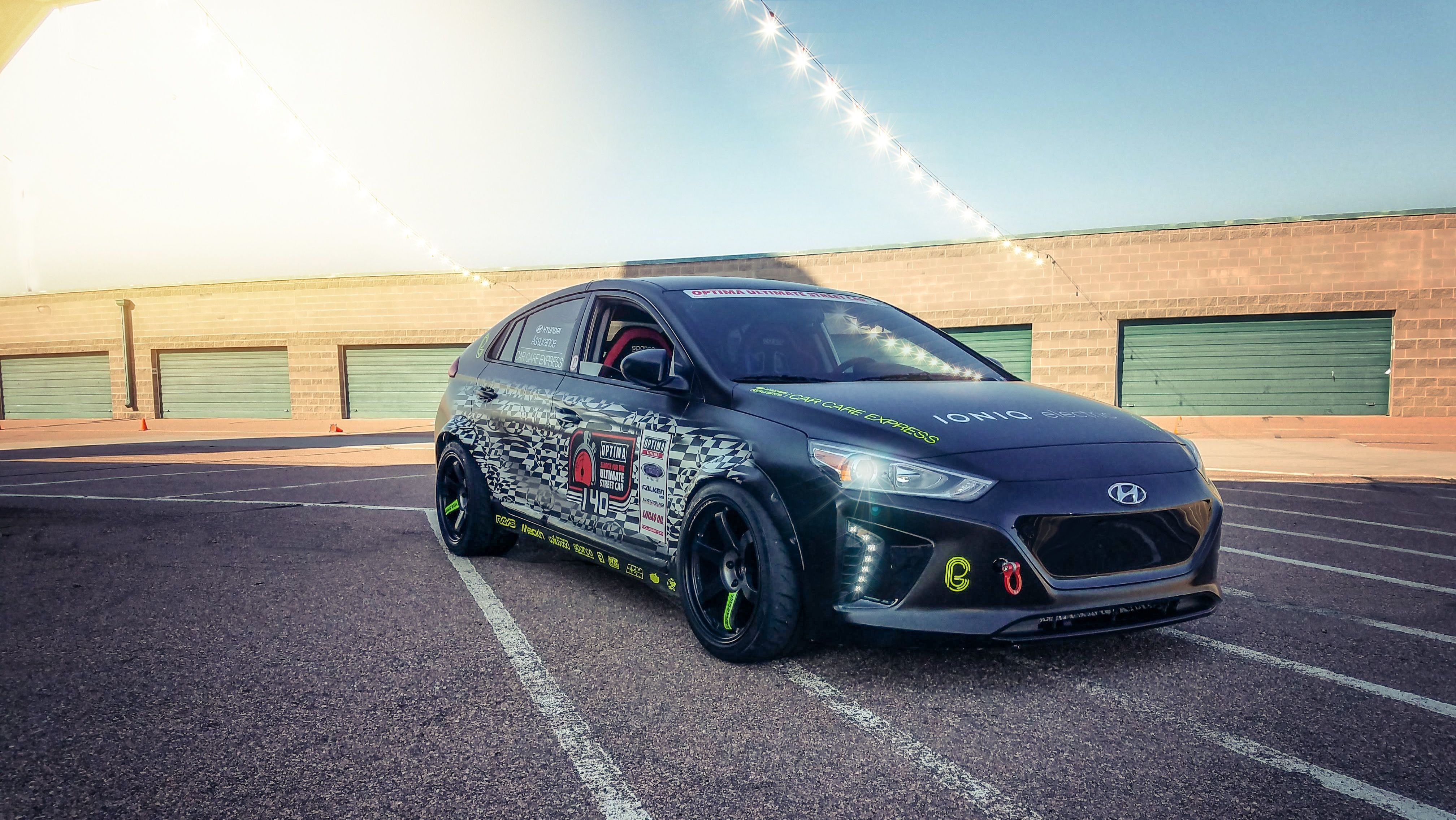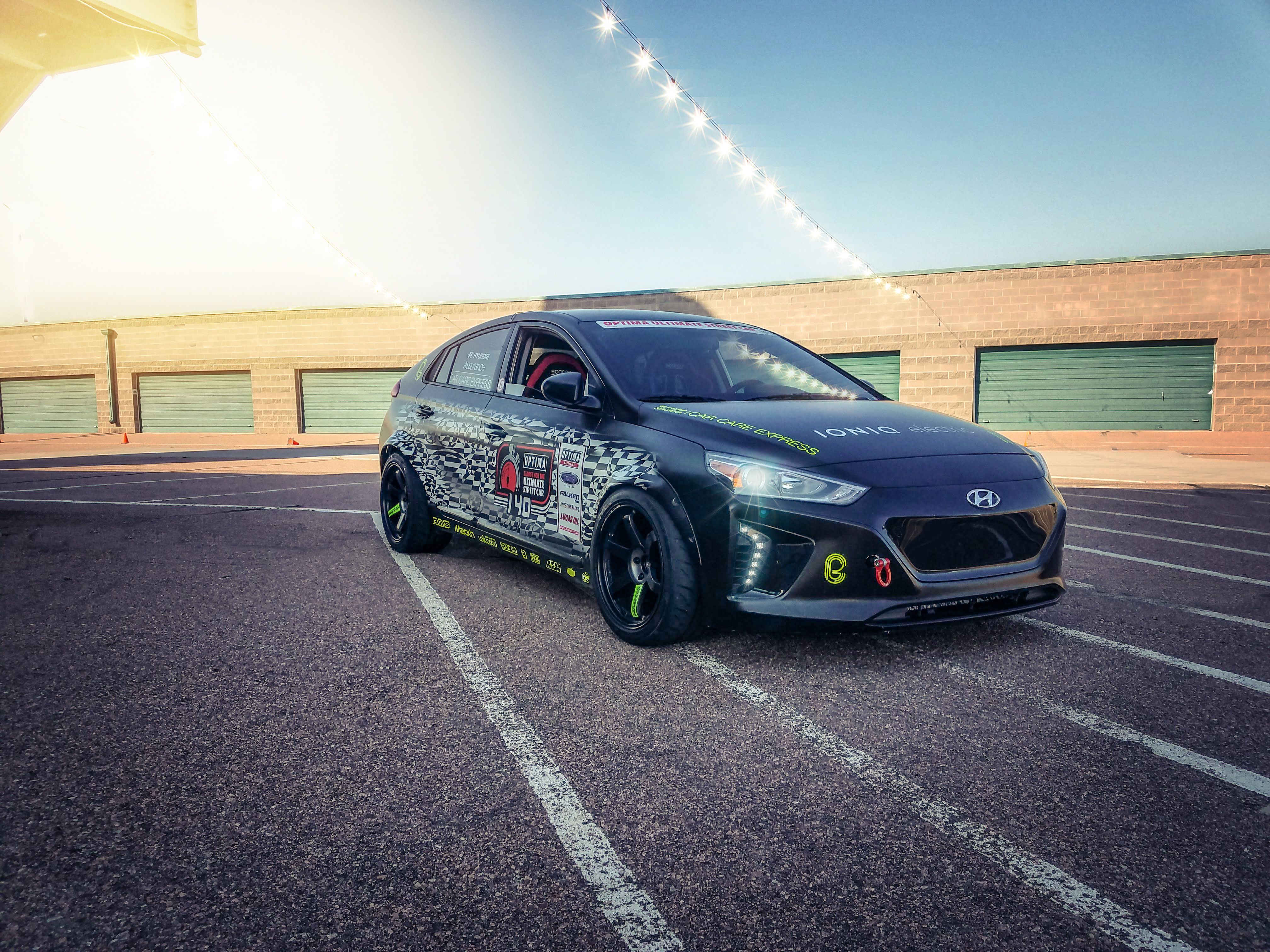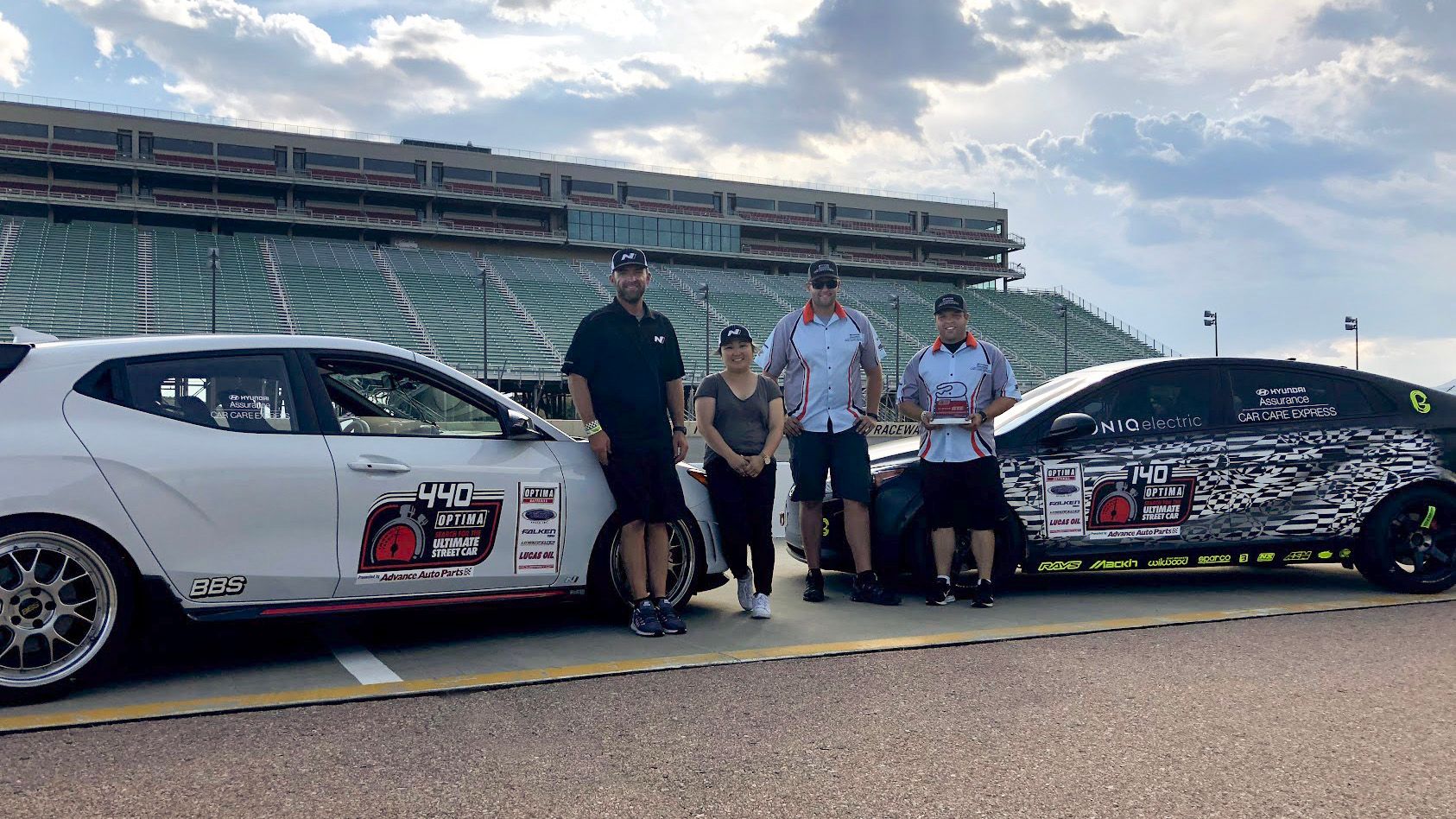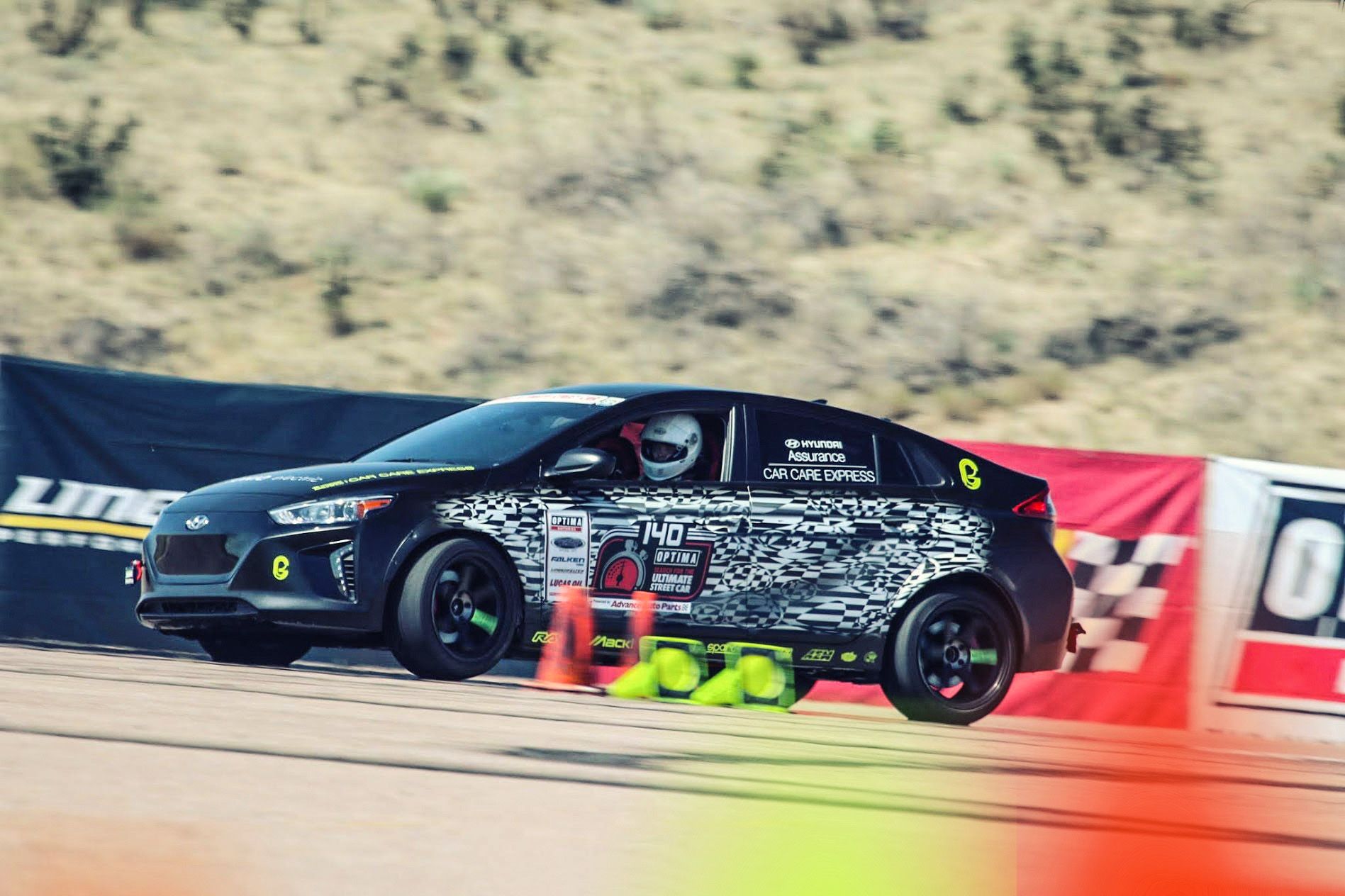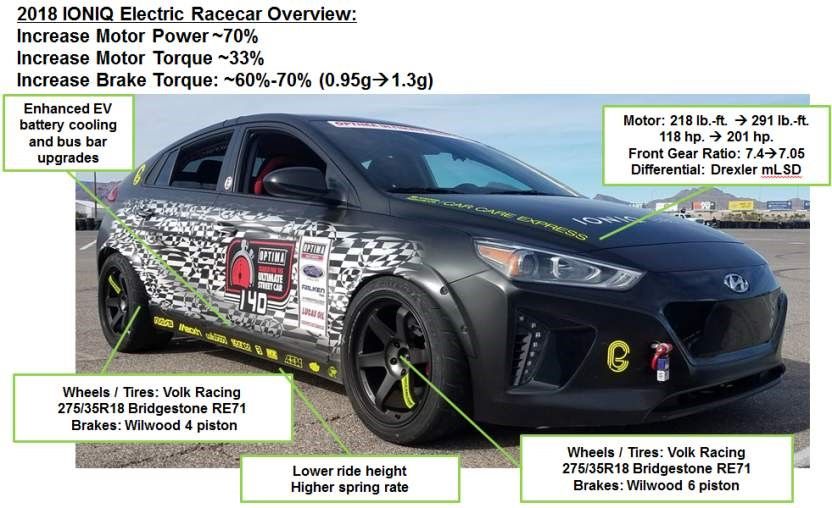The Hyundai Ioniq Electric may not look like a race car, but leave it to Hyundai to create something out of seemingly nothing with the Ioniq Electric 2018 Ultimate Street Car. Developed to defend its 2017 title in the GTE class of the Optima Ultimate Street Car series, this one-off Ioniq Electric isn’t for the faint of heart. It looks the part of a race car. It’s fitted with a number of racing components. Most importantly, it’s the recipient of an electric motor transplant from the Hyundai Kona, giving it the juice to compete against the likes of Chevrolet Bolt EV and the Tesla Model S P100D. The Hyundai Ioniq Electric is scheduled to compete in the last two races of the 2018 Optima Ultimate Street Car Invitational.
2018 Hyundai Ioniq SEMA Ultimate Street Car
- Make: Array
- Model: 2018 Hyundai Ioniq SEMA Ultimate Street Car
- [do not use] Vehicle Model: Array
What Makes the Hyundai Ioniq Ultimate Street Car Special?
The Hyundai Ioniq Electric’s victory in last year’s “Search for the Ultimate Street Car” in the GTE class comes with an asterisk beside it, largely because it was the only car that competed in its class. It was, for all intents and purposes, a one-car race. This year, the stakes are higher because the Ioniq Electric has competition from models like the Chevrolet Bolt EV and the Tesla Model S P100D. So, is Hyundai’s electric racer ready to test its mettle against other EV models?
The Ioniq Electric’s exterior retains most of its standard looks. There’s a good amount of graphics and racing decals covering its body, giving it a proper race-car look. For the most part, though, it still looks like the Hyundai Ioniq.
That’s because the important upgrades can’t be seen with the car sitting still and posing for pictures. Beneath the matte body wrap and the race-inspired graphics is a new AC permanent magnetic electric powertrain that Hyundai took from the Kona Electric and bolted into the Ioniq Electric.
Obviously, a new — and more powerful — electric motor is just one piece to this puzzle. To get the racer running like a champ, Hyundai also installed higher airflow fans and dedicated air conditioning ducting to enhance battery cooling. A water-cooled AC condenser was also thrown in to improve battery cooling while the car is pitted or when it’s charging. Power electronics cooling was also improved, thanks largely to an upgraded radiator and electric water pumps. In order to improve launch and limit driving control, the Ioniq Electric also received torque map/rate tuning.
On the suspension front, Hyundai put in lowering springs with a firmer spring rate and added a Drexler limited slip differential, tuned with a 7.05 gear ratio.
The Hyundai Ioniq Electric Ultimate Street Car is a full-fledged racer. It’s going to have a challenge on its hands with actual competitors in its class now, but don’t sleep on the racer to simply hand over its title without a fight. More importantly, the Ioniq Electric isn’t just a race car in the purest sense of the word. It’s also a test bed for Hyundai’s engineers, a lot of whom will rely on the car to provide important data for the automaker’s future electric vehicles.
Further reading
Read our full review on the 2017 Hyundai Ioniq Electric.
Read more Hyundai news.
Read more SEMA Show news.

